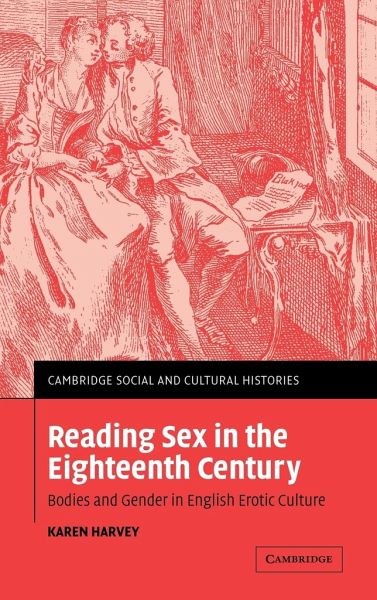
Reading Sex in the Eighteenth Century
Bodies and Gender in English Erotic Culture

PAYBACK Punkte
54 °P sammeln!
An exploration of the construction of sexual difference and gender identity in eighteenth-century England.Karen Harvey explores the construction of sexual difference and gender identity in eighteenth-century England. Using erotic texts and their illustrations, and rooting this evidence firmly in historical context, Harvey provides a thoroughgoing critique of the orthodoxy of recent work on sexual difference in the history of the body. She argues that eighteenth-century English erotic culture combined a distinctive mode of writing and reading in which the form of refinement was applied to the m...
An exploration of the construction of sexual difference and gender identity in eighteenth-century England.
Karen Harvey explores the construction of sexual difference and gender identity in eighteenth-century England. Using erotic texts and their illustrations, and rooting this evidence firmly in historical context, Harvey provides a thoroughgoing critique of the orthodoxy of recent work on sexual difference in the history of the body. She argues that eighteenth-century English erotic culture combined a distinctive mode of writing and reading in which the form of refinement was applied to the matter of sex. Erotic culture was male-centred and it was in this environment, Harvey argues, that men could enjoy both the bawdy, raucous, libidinous elements of the eighteenth century and the refined politeness for which the period is also renowned. This book makes a significant contribution to the history of masculinity and advocates a new approach to change in gender history, one capable of capturing the processes of negotiation and contestation integral to cultural change.
Table of content:
1. Contexts; 2. Sexual difference; 3. Female bodies; 4. Male bodies; 5. Space; 6. Movement; 7. Pleasure.
Karen Harvey explores the construction of sexual difference and gender identity in eighteenth-century England. Using erotic texts and their illustrations, and rooting this evidence firmly in historical context, Harvey provides a thoroughgoing critique of the orthodoxy of recent work on sexual difference in the history of the body. She argues that eighteenth-century English erotic culture combined a distinctive mode of writing and reading in which the form of refinement was applied to the matter of sex. Erotic culture was male-centred and it was in this environment, Harvey argues, that men could enjoy both the bawdy, raucous, libidinous elements of the eighteenth century and the refined politeness for which the period is also renowned. This book makes a significant contribution to the history of masculinity and advocates a new approach to change in gender history, one capable of capturing the processes of negotiation and contestation integral to cultural change.
Table of content:
1. Contexts; 2. Sexual difference; 3. Female bodies; 4. Male bodies; 5. Space; 6. Movement; 7. Pleasure.












![Notes and Sketches [I]Llustrative of Northern Rural Life in the Eighteenth Century Cover Notes and Sketches [I]Llustrative of Northern Rural Life in the Eighteenth Century](https://bilder.buecher.de/produkte/67/67091/67091209n.jpg)

